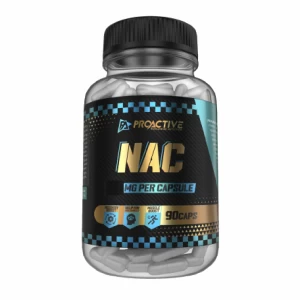
| Package | Stock | Expiration | Your price | Buy |
|---|---|---|---|---|
| 90 cps | the product is sold out, Monitor availability | |||
The action of NAC - N-acetyl-L-cysteine cannot be described in a few words. To explain how NAC works, we must first explain what glutathione is. Glutathione is a tripeptide composed of glycine, glutamic acid, and cysteine that is found in many tissues and body fluids where it is involved in oxidation and reduction reactions. Thus, it has a protective effect on cells. Reactive oxygen species are mainly produced in cells as a by-product of normal mitochondrial metabolism and are involved in the initiation of apoptosis or cell death. Glutathione is involved in the regulation of apoptosis, playing an important role as a substrate for enzymes that scavenge these reactive oxygen species.
N-acetyl-L-cysteine is a precursor of intracellular cysteine because of its effect on its synthesis. It is generally accepted that the effects of NAC are due to its antioxidant properties or free radical scavenging abilities by increasing intracellular cysteine levels. The availability of cysteine may limit the rate of glutathione synthesis during oxidative stress. N-acetyl-L-cysteine is an acetylated cysteine residue that may help protect cells from oxidative stress. NAC, through its association with cysteine, may minimize the oxidative effect of reactive oxygen species by correcting or preventing the depletion of glutathione stores.
Benefits:
Ingredients:
| Single serving size: | 1 tbl. |
|---|---|
| Number of doses per pack: (90 tbl.) | 90 |
| N-acetyl-L-cysteine | 150 mg |